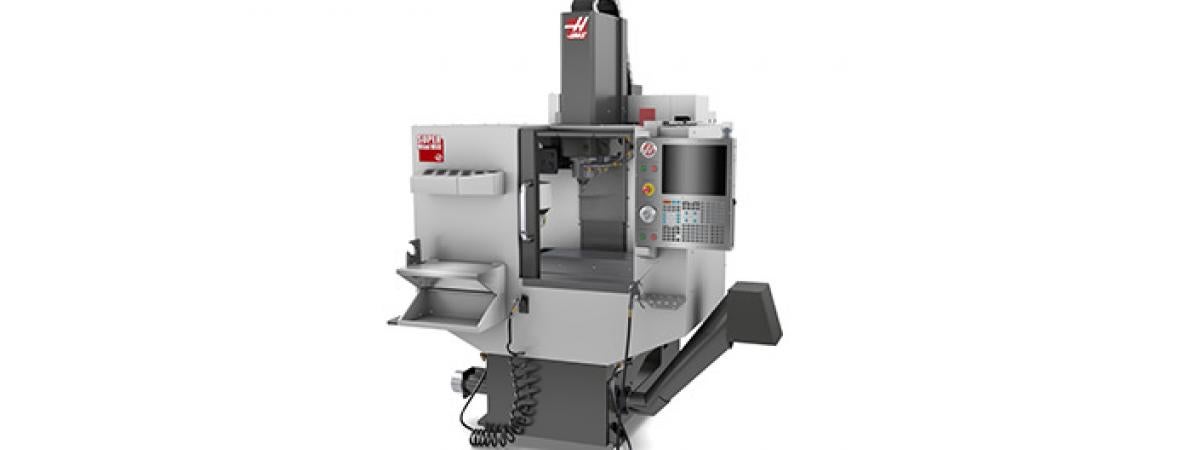At Sears think[box], you can program this computer numerical control (CNC) mill to produce high quality metal and plastic parts.
How to Start
The CNC Mill is a powerful but complex tool. Unlike other think[box] equipment, the CNC Mill requires a foundation of knowledge and skills which must be acquired before it may be used.
Here's how to start:
- Schedule and complete training on the manual Mills to learn the fundamentals of milling.
- After you complete the Mills training, schedule and complete training on the CNC Mill outlined below.
- Generate a CNC program for your part using a Computer Aided Manufacturing (CAM) program.
Read on for details.
CNC Mill Training
Training on the CNC Mill will cover the following processes:
- Powering the machine on and performing the warm-up routine
- Material fixturing options
- Machine operation modes
- Loading tools and running the tool-teaching system
- Using the probe system to locate workpieces within the machine
- Navigating the file structure and running programs
Schedule training on the CNC Mill but only after you have completed training on the manual Mills.
CNC Programming
The most difficult skill to acquire is that of using a CAM program to generate CNC programs. While CAM software simplifies the process by generating CNC code automatically, there are still complexities that need to be understood and mastered.
MasterCAM and VCarve are the CAM programs used at think[box]. There are many other CAM programs available, and most major CAD packages include a CAM package built into the software.
Working with CAM software often involves intricate machining processes and a deep understanding of tooling strategies. While the software automates many aspects, it still requires the programmer's expertise to define the appropriate cutting tools, speeds, feeds, and machining parameters. Determining the optimal toolpaths to achieve desired outcomes while considering factors like material removal rates, surface finish, and tool life necessitates both creative thinking and technical knowledge. Making errors or overlooking critical details in CAM programming can lead to costly mistakes and suboptimal machining results.
Practical hands-on experience is crucial for effective learning of CAM programming. While CAM software simplifies the programming process, understanding the underlying principles and translating design intent into optimized toolpaths still requires practical application. Working with CNC machines, simulators, or virtual machining environments to observe the results, analyze feedback, and troubleshoot issues is vital.
Sears think[box] full-time staff can give advice and help users decide and refine cutting parameters, but learning these skills can still be quite challenging. Patience, perseverance, and hands-on experience are key to overcoming these challenges and becoming proficient in CAM programming for CNC machines.
Materials and Supplies
Since tool breakage can be a common occurrence with novice users of the machine, think[box] provides limited tooling for the CNC mill. If very specific tool sizes or types are required, we recommend that you provide your own.
Haas Super Mini Mill Technical Information
- Travel: 16 x 12 x 10 inches.
- Table: 28.75 x 12 inches
- Spindle: 10,000 RPM.
- Tool Changer: 10 tool carousel.
- Maximum Feedrate: 833 inches per minute.


